Unit 3: CAUSES AND IMPACT OF THE AMERICAN REVOLUTION
Key unit competence: By the end of this unit, the learner should be able
to explain the causes and impact of the AmericanRevolution.
1. Discuss the causes of the 1990 liberation war in Rwanda. Use the
knowledge gained from internet, textbooks and other sources of
information in your discussion. Let one of you compile a report
for class presentation.2. From the causes provided, give the meaning of the American
Revolution.Introduction.
The American Revolution was a socio –political and economic upheaval
that took place in America between 1765 and 1783. Thirteen American
colonies rejected the British monarchy and dictatorship. They overthrew
the authority of Great Britain and founded the United States of America.
The American Revolution is also known as the American war of
independence.
The thirteen former British American colonies were Virginia, New York,
Massachusetts, Maryland, Rhode Island, Connecticut, New Hampshire,
Delaware, North Carolina, South Carolina, New Jersey, Pennsylvania and
Georgia.
These American colonies had been under British control for a long periodof time. They wanted to be independent.
During the period of colonisation, the colonies united against the British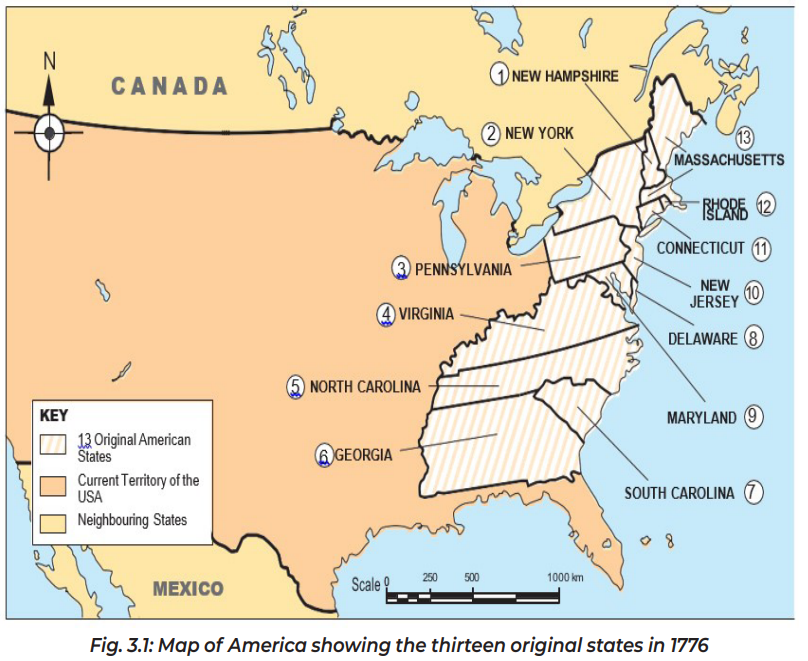
Empire. They took up arms and started the revolutionary war. This
culminated in the declaration of independence in 1776. The thirteen
states defeated the British in the battlefield in October 1781. They wereled by George Washington as the first American president.
3.1. Causes of the American Revolution
Refer to Introductory Activity, pick out points that you think were the
same causes of the American Revolution. Present your findings in class.
Let us now study the causes of the American Revolution under the
following sub-headings:(i) Political causes
(ii) Economic causes(iii) Social causes.
 Political causes
Political causes
• The rise and growth of nationalism among the Americans andneed for independence.
This was promoted by nationalists such as Samuel Adams, George
Washington, Benjamin Franklin and Thomas Jefferson. They argued that if
the British governed themselves, why not Americans? This awakened theneed for self-rule among the Americans hence leading to the revolution.
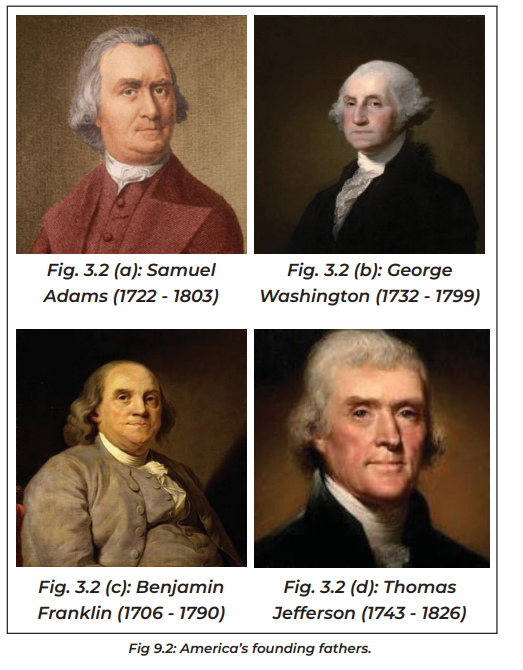
• The effects of Anglo-French war of 1756-1763.
During this war, France was fighting with Britain over profitable colony of
Canada. The war ended with the defeat of France by Britain and taking
over Canada. The effect of this was that it weakened Britain financially
and encouraged the Americans to revolt against her. Britain also raised
taxes to solve financial crisis at home. Americans protested against the taxincrement.
• The passing of intolerable acts.
These included the Stamp Act whereby revenue stamps were put on
printed materials and commercial documents like news papers. It was
replaced by Townshend Act whereby the British chancellor levied taxes
on lead paper, paint, glasses and tea. These were received with negativityby Americans making them to begin a war of independence.
The character of King George III of England.He came to power in 1760. Unlike the former kings, he wanted to bring
American colonies to closer control. In order to achieve this, he introduced
a number of harsh laws. He was also so rigid that he refused to changethe taxation system.
• The oppressive rule of the British government.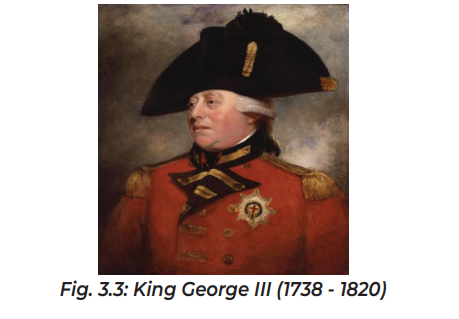
The British leaders such as Greenville, Townshend and Rocking were harsh
to the Americans. They did not allow freedoms such as of speech, press
and worship. There were no fair trials in courts of law. All these annoyed
the Americans.The Boston massacres of 1770.
After the Townshend Act, the Americans started shouting and throwing
snow and ice to the English troops. The troops responded by firing and
killing them at Boston. This is what came to be known as the Boston
massacres. It drove the Americans into a war of independence againstthe British.
• Undemocratic nature of the British leadership.
The Americans were not given chance to participate in the politics of
their country. This made them inferior. Only the rich were elected to the
colonial assemblies as opposed to the poor. This was opposed by themajority hence leading to the revolution.
• Inter-colonial congress at Philadelphia.
In 1774, representatives from all colonies met at Philadelphia. It was there
where they started preparing for war. They chose George Washington as
the leader of the revolution. They trained soldiers known as minutemen
and started seeking assistance from other countries.
Other causes were the unfair judicial system of Britain and the restriction for coloniesto occupy new lands of Ohio and Louisiana.
For a country’s political, social and economic development, peace is a
requirement. For every country to achieve set goals, its youth must workhand in hand with government agencies to promote peace in our country.
 Economic causes.
Economic causes.• Poor economic policy of the British.
The Americans were not allowed to set up their own industries in America.
This was intended to force them to continue buying expensive British
manufactured goods. This was viewed as a move to subject them toendless poverty. They opposed the policy.
• The Boston Tea Party in 1773.
This was when the Americans dropped boxes of tea from Britain into
water at Port Boston at night. This made the British government furious.
The government decided to close the Boston harbour. It also punished
Americans so as to pay back the tea. This too led to the American
Revolution.• Trade monopoly by the British.
In America, trade was exclusively done by the British. All European goodsimported to the colonies had to pass through England for taxation.
The British benefitted while the Americans did not. On top of that, the
imports were expensive compared to exports. This exploitation made theAmericans to revolt for their independence.
• The unfair taxation system.
In North America, Britain raised taxes in order to meet her debt expenses
and to solve financial crisis at home. Both direct and indirect taxes such
as like stamp tax, sugar tax and currency tax were introduced. Other
economic causes were:• Exploitation of American resources
• Inflation
• Forced labour• Unemployment
• The role of political philosophers. Social causes
Social causes
These were intellectuals and great thinkers who exposed the wrongs of
the British government to the Americans. Philosophers such as Thomas
Penn and Patrick Henry inspired and awakened Americans to fight for
their independence. They used newspapers such as New York gazette,American Mercury and The Boston Newsletter.
• Foreign support.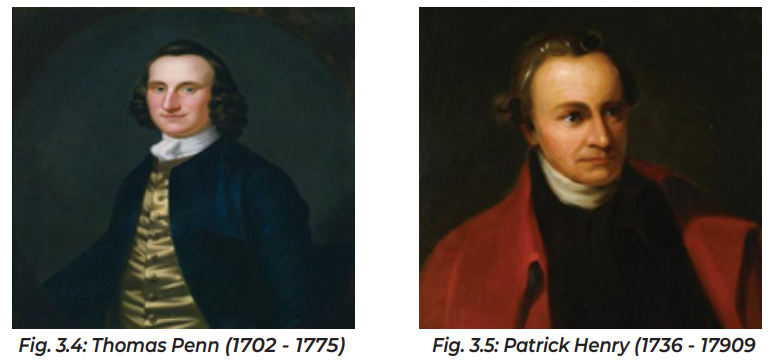
The Americans got foreign support from other countries such as France,
Germany and Spain. These countries gave Americans military, moral and
financial support. This increased the determination of Americans to fightfor their independence.
• Religious intolerance.
There were religious differences between the Americans and the British.
Americans had many religions which were different from the British
Anglicans. The British forced Americans to adopt their religion against
their will. The protestant religions practised by the Americans included
Lutherans, Puritans, Huguenots and Presbyterians. Americans strongly
opposed it thus leading to the revolution.
Remember: In most cases war has negative effects on social, political
and economic aspects of the society. Therefore, it is very important that
non-violent approaches such as peace talks be used to settle conflicts. The
world needs peace.
America has the most developed economy in the world. This is partly
because she was able to attain her self-rule which led to self-reliance in the
long run. It is therefore important that we cooperate towards defending
our country’s independence. We can only achieve this by working hard toachieve self-reliance as a tool for economic development.
The above reasons justify the causes of American rebellion against British Application Activity 3.1.
Application Activity 3.1.
oppressors from 1776-1803 which finally succeeded. They got independence
with George Washington as the first American president.Categorise the above factors into two parts; immediate and long term factors.
3.2. Effects of the American Revolution both in America and therest of the world
Use different sources such as films, textbooks to give the consequences

of the American Revolution.
Learning Activity 3.2.
The American Revolution had a great impact on today’s world political,
social and economic systems. Let us now look at its effects:1. The revolution led to loss of lives. Many people including soldiers,
civilians, Americans, the French and the British died in the war.2. It led to destruction of property such as buildings, roads, bridgesand communication lines.
3. It led to the inclusion of blacks into Americans citizenship, a
privilege which had earlier been denied to them by the British.
4. The monopoly of the protestant church was removed and after the
revolution. There was freedom of worship among the Americans.
It increased religious freedom in all states of America. The citizens
were no longer forced to join Protestantism. Many churches came
up. Other Americans became Muslims.
5. It led to the 1789 French Revolution due to the effects it had on theFrench government. For example, there was a financial crisis inFrance. There was also the spread of revolutionary ideas by the ex soldiersof the American Revolution such as General Lafayette.
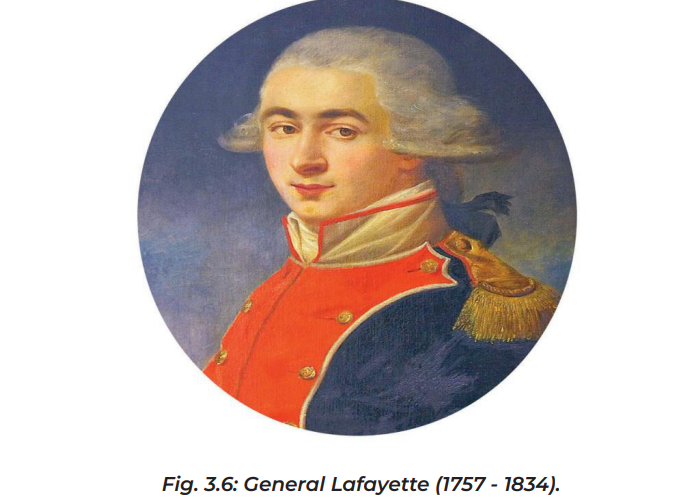 6. It led to the granting of independence to the American colonies.
6. It led to the granting of independence to the American colonies.
At Paris treaty of 1783, the British king recognised the colonies of
America to be free, sovereign and independent. The 13 states were
now free to join together and become the United States of America.
7. There was liberalisation of trade after the American Revolution.
The Americans were free to carry out trade without the British
monopoly. The British limitations on American trade were removed,
allowing the marine merchants to trade freely.
8. It created good diplomatic relationship between France andAmerica. This was due to the assistance rendered by the French
to the Americans against the British imperialists. France provided
Americans with arms and a combat army to serve under George
Washington. They also sent a navy that prevented the second Britisharmy from escaping from Yorktown in 1871.
9. It increased the status of women and subsequent women
emancipation. Women now took control of the families and catered
for school going children. Men were away fighting for independence.
The revolutionary war affected women by placing them in nontraditional roles.
As men went off to war, women were left to fill jobs
typically fulfilled by men. This in turn changed society by showingthe world that women could do what men can do.
10. The American Revolution increased the status of George Washington
for his role in gearing the struggle for independence. During the
American Revolution, he led the colonial forces to victory over the
British and became a national hero. Its success was attributed tohim. He later became the first president of America.
 Application Activity 3.2.
Application Activity 3.2.
With the help of your teacher, debate on the positive impact of theAmerican Revolution.
 1. Explain what you understand by the term ‘American Revolution’.
1. Explain what you understand by the term ‘American Revolution’.
2. Account for the outbreak of the American Revolution in 1776.
3. Discuss the consequences of the American Revolution both in
America and Europe.
4. Asses the significance of the American Revolution in world
affairs.5. Identify the economic causes of the American Revolution.
